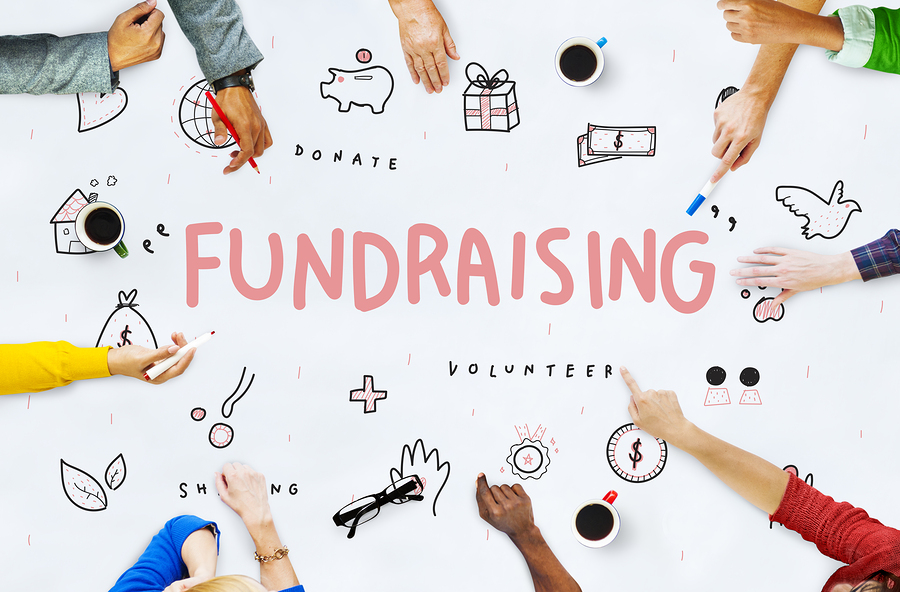Top Nonprofit Fundraising Ideas: Innovative Strategies to Raise More Funds
Top Nonprofit Fundraising Ideas: Innovative Strategies to Raise More Funds
Blog Article
The Function of Neighborhood Interaction in Nonprofit Fundraising: Building Lasting Relationships for Sustainable Assistance
Neighborhood involvement is progressively identified as an essential component of effective not-for-profit fundraising. The techniques and methods utilized to involve areas differ extensively, elevating important concerns regarding efficiency and effect.
Comprehending Area Engagement
Neighborhood involvement is a crucial element of effective not-for-profit fundraising initiatives. It describes the techniques and activities that companies employ to connect with their local communities, fostering partnerships that are equally useful. Comprehending community interaction involves recognizing its complex nature, that includes cooperation, involvement, and outreach. Nonprofits must identify essential stakeholders-- such as area participants, neighborhood companies, and various other companies-- to develop efficient involvement methods.
Reliable community interaction is predicated on active listening and responsiveness to the demands and rate of interests of the neighborhood. This process includes obtaining responses, recognizing neighborhood dynamics, and making sure that the organization's goal straightens with regional top priorities. Engaging the neighborhood can take numerous kinds, including public meetings, volunteer possibilities, and collaboration initiatives, each made to motivate participation and investment in the organization's objectives.
Furthermore, neighborhood involvement should be come close to as a recurring dialogue as opposed to an one-time initiative. By promoting a comprehensive environment where neighborhood voices are listened to and valued, nonprofits can construct a strong foundation for future fundraising endeavors. Inevitably, a deep understanding of area engagement equips companies to develop genuine connections that enhance their general efficiency and sustainability.
Benefits of Solid Relationships
Solid partnerships created through community interaction return many advantages for nonprofit fundraising initiatives. Most importantly, these partnerships foster count on and reliability, vital elements in encouraging contributors to add. When prospective fans see a nonprofit proactively associated with their neighborhood, they are most likely to count on its mission and impact.

Moreover, these partnerships assist in effective interaction. Nonprofits can leverage their links to share stories of effect, updates, and needs, making certain that supporters continue to be informed and engaged. This open line of interaction not just enhances bonds yet also encourages referral promo, expanding the not-for-profit's reach.
Finally, strong area connections can attract brand-new companions and enrollers. People and businesses are much more likely to align with companies that demonstrate meaningful community participation, giving added sources and support that can substantially boost fundraising capacities. Therefore, cultivating robust connections with area interaction is essential to a not-for-profit's lasting fundraising success.
Approaches for Effective Interaction
How can nonprofits efficiently involve their communities to enhance fundraising initiatives? Routine updates, involving content, and calls-to-action can galvanize community interest and engagement.
2nd, organizing community events, such as workshops, volunteer possibilities, or fundraising drives, promotes in person interaction, allowing nonprofits to showcase their influence and efforts. These occasions not just raise funds yet additionally grow relationships and permit neighborhood participants to engage straight with the cause.
Third, implementing tailored interaction methods can improve engagement. Customizing messages to specific benefactor sections based upon passions and previous payments fosters a feeling of belonging and financial investment in the company's objective.
Last but not least, producing collaborations with neighborhood businesses and area leaders can amplify outreach efforts. Joint initiatives can boost presence and integrity, demonstrating a cumulative dedication to the area's health. By incorporating these strategies, nonprofits can build long-term partnerships that enhance fundraising initiatives and drive lasting support.
Determining Engagement Success
While involving the neighborhood is crucial for effective not-for-profit fundraising, gauging the effectiveness of these interaction efforts is similarly crucial. Establishing clear metrics enables organizations to analyze exactly how well they are connecting with their target market and accomplishing their fundraising goals. Secret efficiency signs (KPIs) such as benefactor retention prices, volunteer engagement degrees, and interaction on social networks systems provide substantial data for examination.

Consistently evaluating these metrics enables companies to pivot their methods when essential, making certain that area engagement remains straightened with their general goal. Moreover, sharing these results with stakeholders promotes openness and constructs trust fund, motivating additional community participation. Inevitably, a durable measurement structure not only informs future fundraising campaigns yet also strengthens the connection in between the nonprofit and its supporters, preparing for sustainable success.
Case Studies in Community Effect
Various study illustrate the profound effect that area involvement can carry nonprofit fundraising success. One noteworthy instance is the "Food for Idea" effort, where a local food bank partnered with organizations and institutions to host neighborhood dinners. These events not only increased funds yet additionally promoted a sense of belonging amongst participants, significantly enhancing donor retention prices.
An additional engaging instance is the "Eco-friendly Spaces Project," which entailed regional residents in the revitalization of metropolitan parks. This initiative not just amassed financial support from local businesses however additionally grew a volunteer base that added to recurring maintenance and programs. The sense of ownership and satisfaction amongst neighborhood participants translated into continual contributions.
In the realm of arts, the "Art for All" campaign effectively involved neighborhood artists and customers to create collective art installations, resulting in enhanced visibility and donations for a local arts not-for-profit.
These instances highlight that when nonprofits prioritize area involvement, they can develop long lasting partnerships that boost fundraising initiatives, ensuring sustainable assistance and fostering a vibrant community culture. Such situations show that area engagement is not just an approach yet an essential column of not-for-profit success.
Final Thought
In final thought, community engagement is important to the success of not-for-profit fundraising initiatives. Eventually, a robust structure of neighborhood support not only enhances fundraising potential yet likewise grows a society of collaboration, necessary for attaining lasting business goals and maintaining meaningful impact. fundraising consultant.
Nonprofits should determine crucial stakeholders-- such as area members, local services, and other organizations-- to produce efficient involvement strategies.

In conclusion, neighborhood interaction is important to the success of nonprofit fundraising initiatives.
Report this page